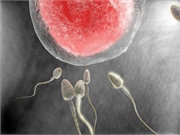Chances range from 51 to 88 percent depending on use of frozen versus fresh embryos
FRIDAY, May 29, 2020 (HealthDay News) — Women have a good chance of having a second child with the help of assisted reproductive technology (ART), according to a study published online May 8 in Human Reproduction.
Repon C. Paul, from the University of New South Wales in Sydney, and colleagues evaluated success rates for women returning to ART treatment for a second ART-conceived child. The analysis included 35,290 women who began autologous ART treatment and achieved their first treatment-dependent live birth from treatment performed from January 2009 through December 2013, with follow-up through 2015.
The researchers found that among the women who had their first ART-conceived live birth, 43 percent returned to treatment. Compared with women who underwent a new ovarian stimulation cycle, live birth rates (LBRs) were consistently better in women who recommenced treatment with a previously frozen embryo. The cumulative LBR after six cycles was between 60.9 percent (conservative) and 88.1 percent (optimal) for women who recommenced treatment with a frozen embryo versus between 50.5 and 69.8 percent for those who underwent a new ovarian stimulation cycle. For women ≥35 years, who waited at least three years before returning to treatment or who required either a higher number of ovarian stimulation cycles or double embryo transfer to achieve their first child, the adjusted odds of a second ART-conceived live birth decreased.
“These age-specific success rates can facilitate individualized counseling for the large number of patients hoping to have a second child using ART treatment,” the authors write.
Two authors disclosed financial ties to the pharmaceutical industry.
Copyright © 2020 HealthDay. All rights reserved.








